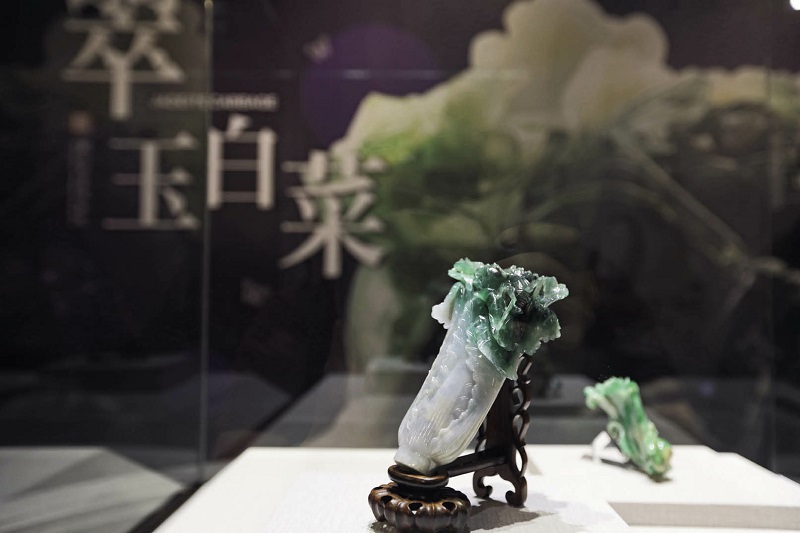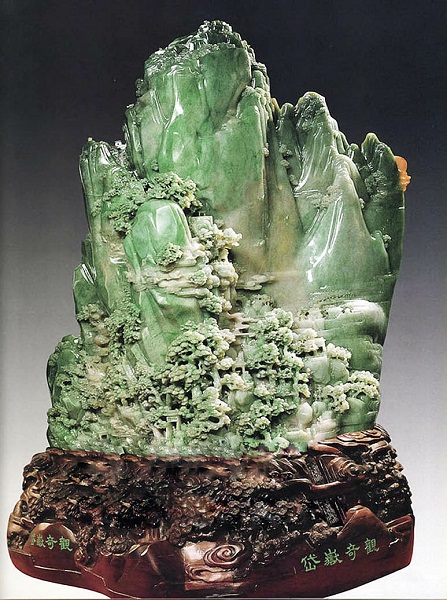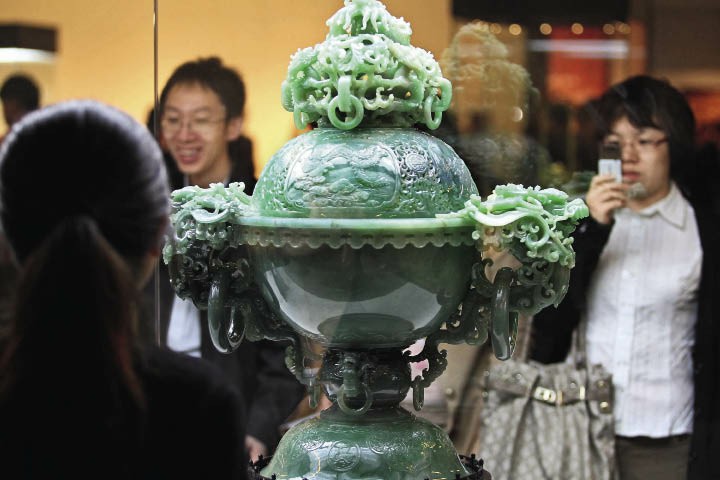Jade enjoys a high cultural status in China. It is regarded as a symbol of virtue and nobility. A popular proverb says, “For a man of true nobility, it’s better to be a broken piece of jade than a whole tile.” It means that a man would rather die in glory than live in dishonor.
Seen as the essence of Heaven and Earth, jade was used to make sacrificial vessels for royal families in ancient dynasties. Royal family and nobles wore jade jewelry and regarded it as a symbol of status.
Chinese people love jade for the virtue it represents. It is hard yet warm, beautiful yet reserved, noble yet inclusive. The phrase, “As modest and gentle as jade” is often used to describe a man with discreet gentility. And Chinese characters synonymous with jade are also a popular choice for children’s names.
According to archaeological findings, Chinese knew about and began to use jade during the Hongshan and Liangzhu cultures in the Neolithic Age, which is over 10,000 years ago. Since then, jade artisans one generation after another have made brilliant artworks of jade, with their exquisite skills and intricate techniques.
Among all kinds of sophisticated jade carving skills in China, the Beijing jade carving craft is world famous for its magnificence and use of royal elements. Artifacts made by this craft are widely appreciated worldwide. They are also protected by the state, and rank among the “Eight Magnificent Treasures of Beijing.”

The jade cabbage, a collected art piece at the Taipei Palace Museum, is a renowned masterpiece of Beijing Jade Carving.
From Palace to Households
Beijing jade carving is a popular craft in Beijing. It used to be an imperial craft, since jade was initially owned, for the most part, by the royal family and nobility, and only a small amount was available among the general public. The renowned jade cabbage in the collection of the Taipei Palace Museum in Taiwan is a typical example of this craft.
The craft originated in the Yuan Dynasty (1271-1368) with the founder reportedly being Qiu Chuji, a noted figure in China’s Taoist history. In the following Ming Dynasty (1368-1644), a jade studio was set up in the imperial court, which gathered skilled jade cutters from across the country to make fine products for the royal family. From this point, the imperial jade carving craft took off.
Moving forward to the Qing Dynasty (1644-1911), jade was especially popular in Beijing, and the craft of carving jade reached a peak. After the end of the Qing Dynasty, the jade carving industry continued to flourish, and the emergence of Pan Bingheng, Liu Deying, He Rong, Wang Shusen, and other outstanding craftsmen brought this craft into a new era.
After the founding of the People’s Republic of China in 1949, the Beijing jade carving industry grew exponentially, with thousands of artisans pouring their creativity into exclusive works of art. This period witnessed the making of four national treasures made of jade: Wonders of Mount Tai, Treasure-gathering Censer, Universal Jubilation, and Flowers’ Basket. In 2008, the Beijing jade carving craft was included in the national intangible cultural heritage list.
Beijing jade artifacts are solemn-looking. Circular and relief sculptures were frequently used to make complex patterns. Artworks of this craft collected in the Palace Museum of Beijing all embody the noble and elegant temperament of the capital city. Jade-carved animals and birds, in particular, are plump and robust, and utensils also look magnificent. Some have ornaments like flowers, twisted roots and gnarled branches.

Wonders of Mt. Tai, a Beijing jade carving masterpiece, shows the majestic beauty of China’s Mt. Tai.
Artwork Made from Jade Carvings
Beijing jade carving artisans use fine materials, such as white jade, jasper, and grey jade, and exquisite craftsmanship to produce a wide range of utensils and ornaments.
In the hands of skilled artisans, a piece of rough jade needs to go through multiple processes to become a fine work of art, including material selection, cleaning, cutting, designing, and carving to final polishing. In addition, good tools are also essential. There are different tools for different sizes of jade and different products to be made. One frequently used tool is the emery carving head.
During the process, there is a paramount rule, which is to match the artwork with the appropriate tools since the texture of jade differs from piece to piece. The whole process is to “subtract” unnecessary parts and leave the essence, and every step is critical. Sometimes, the semi-finished product deviates a lot, or is even totally different to the original design.

Treasure-Gathering Censer, one of the four national treasures made of jade, on display.
Lifelong Devotion
Zhang Tiecheng is a third-generation inheritor of the Beijing jade carving craft. His works are magnificent, incorporating royal elements.
“Jade carving is a process of repeated work. Cutting and polishing a piece of jade is energy-consuming, but it’s worthwhile when seeing the final product,” he said.
Zhang still vividly remembers all the steps in his career. In 1983, when the technical school affiliated to the Beijing Jade Factory was recruiting students, he decided to try his luck even though he knew nothing about jade carving at the time. Unexpectedly, he was accepted. After four years of training, he graduated and entered the Beijing Jade Factory.
Upon graduation, Zhang recalled, only 20 percent of the 30 students in his school chose to stay in the industry. With diligence and perseverance, Zhang gradually found his direction. Years of hard work eventually bore fruit and he is now a master of this craft.
In his career, 2008 was a significant year. That year, the Olympic Games were held in Beijing, which made China the focus of the world. Chinese jade culture was also introduced to the world through the Olympic emblem “China seal” and the Olympic medals inlaid with jade. Zhang participated in the design of both.
“In Chinese culture, jade represents integrity, while gold represents wealth. We match white jade with gold, light greenish jade with silver, and grey jade with bronze to make the medals a perfect combination of integrity and honor. Meanwhile, the medals are unbreakable because of a special technique used,” said Zhang. “As athletes travel all over the world, Chinese culture conveyed by jade has also spread to where the medals go.”
Making Olympic medals brought Zhang more recognition from his peers. In 2010, he was invited to restore the interior jade decoration of the Qianlong Garden at the Palace Museum. During his work, Zhang felt sad that the once booming craft was dying.
As an inheritor of Beijing jade carving, Zhang Tiecheng has incorporated new notions of aestheticism into the making of this traditional craft. He hopes that more young people could learn the skills so that this ancient craft will continue to flourish for many years to come.